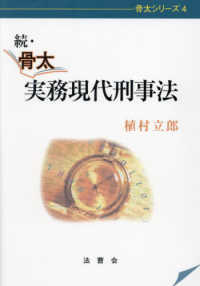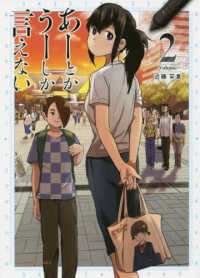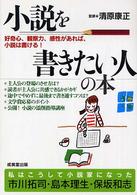- ホーム
- > 洋書
- > 英文書
- > Literary Criticism
Full Description
The postbellum period saw many privileged Americans pursuing a civilized ideal premised on insulation from pain. Medico-scientific advances in anesthetics and analgesics and emergent religious sects like Christian Science made pain avoidance seem newly possible. The upper classes could increasingly afford to distance themselves from the suffering they claimed to feel more exquisitely than did their supposedly less refined contemporaries and antecedents. The five US literary realists examined in this study resisted this contemporary revulsion from pain without going so far as to join those who celebrated suffering for its invigorating effects. William Dean Howells, Henry James, Edith Wharton, Mark Twain, and Charles Chesnutt embraced the concept of a heightened sensitivity to pain as a consequence of the civilizing process but departed from their peers by delineating alternative definitions of a superior sensibility indebted to suffering. Although the treatment of pain in other influential nineteenth century literary modes including sentimentalism and naturalism has attracted ample scholarly attention, this book offers the first sustained analysis of pain's importance to US literary realism as practiced by five of its most influential proponents.
Contents
Introduction: Pain and Postbellum American Sensibilities
PART ONE. High Realism
1: "The Taste of Life": Suffering, Literary Mode, and Howellsian Realism
2: "No Pain and No Consciousness": The James Siblings, Anesthesia, and Suffering
3: "The blind dread of physical pain": Edith Wharton against the New Thought
PART TWO. Curious Realism
4: Stubborn Fractions: Mark Twain, Christian Science, and Pain
5: Charles Chesnutt's Realist Vision
Epilogue: "True Realism" and a "Truer World"







